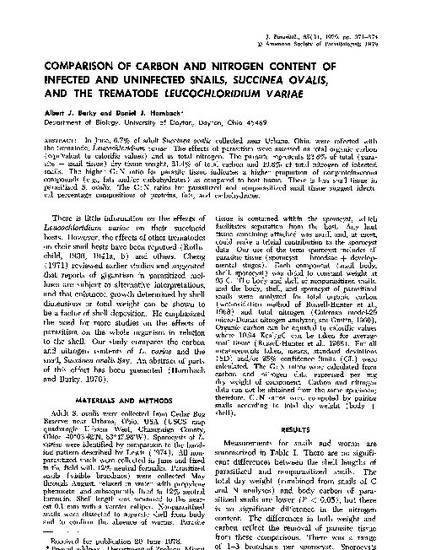
In June, 6.7% of adult Succinea ovalis collected near Urbana, Ohio, were infected with the trematode, Leucochloridium variae. The effects of parasitism were assessed as total organic carbon (equivalent to calorific values) and as total nitrogen. The parasite represents 23.8% of total (parasite + snail tissue) dry tissue weight, 21.4% of total carbon and 19.8% of total nitrogen of infected snails. The higher C:N ratio for parasite tissue indicates a higher proportion of nonproteinaceous compounds (e.g., fats and/or carbohydrates) as compared to host tissue. There is less snail tissue in parasitized S. ovalis. The C:N ratios for parasitized and nonparasitized snail tissue suggest identical percentage compositions of proteins, fats, and carbohydrates.
- Amer Soc Parasitologists,
- Article
Available at: http://works.bepress.com/albert_burky/3/
